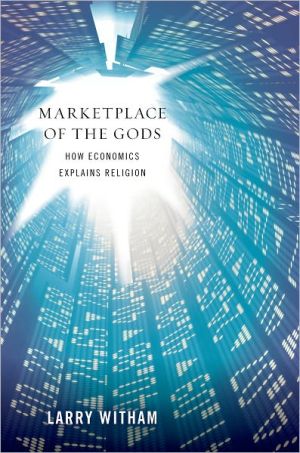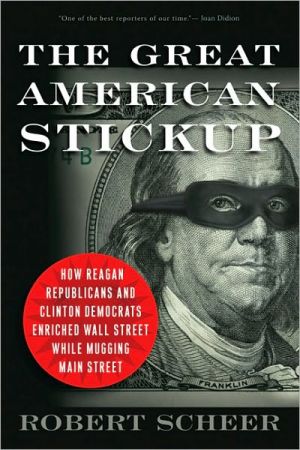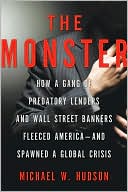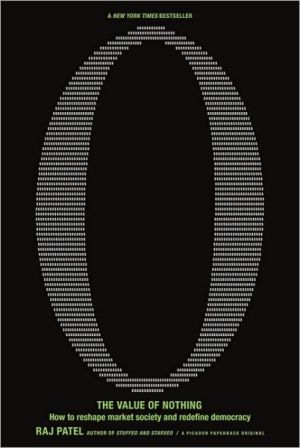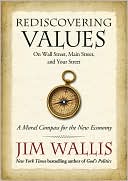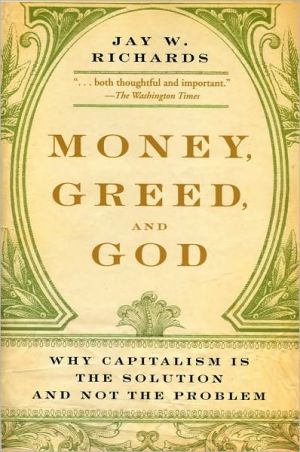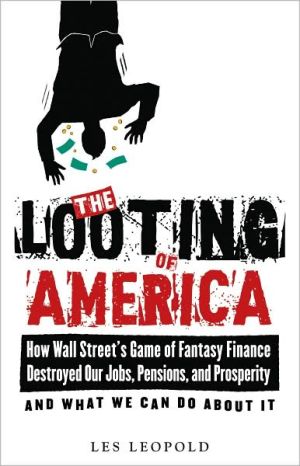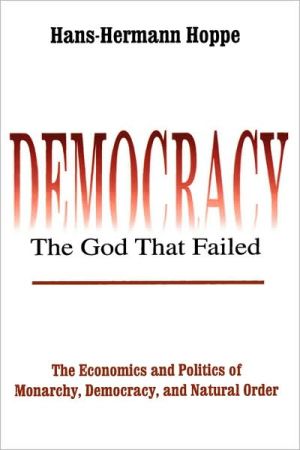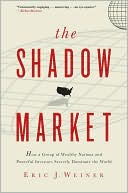Marketplace of the Gods: How Economics Explains Religion
Two centuries after Adam Smith illuminated the workings of the marketplace, a new movement among economists and social scientists is expanding his insights into a groundbreaking "economics of religion." Using cutting edge ideas from the behavioral sciences, and a deep knowledge of religious history, this new approach is making sense not only of past beliefs, but of religion today.\ In Marketplace of the Gods, award-winning journalist Larry Witham tells the inside story of this expanding...
Search in google:
Two centuries after Adam Smith illuminated the workings of the marketplace, a new movement among economists and social scientists is expanding his insights into a groundbreaking "economics of religion." Using cutting edge ideas from the behavioral sciences, and a deep knowledge of religious history, this new approach is making sense not only of past beliefs, but of religion today. In Marketplace of the Gods, award-winning journalist Larry Witham tells the inside story of this expanding "economic approach" to religion, the puzzles it tries to solve, the controversies it has stirred, and the people who are making it happen. He shows that the economic approach, while evoking images of stock markets or accounting ledgers, actually begins with a simple idea about human beings as rational actors, judging costs and benefits in life. Every life has limits, so human experience is a series of trade-offs, balancing resources to make choices for the best possible benefits. As the economics of religion shows, this model can be applied to the rich story of the human race and its gods. Beginning with the individual, the choices in religion shape households, groups, movements, and entire "religious economies" of nations. On the one hand, this mixing of the profane and the sacred, the economic and the religious, is an exciting exchange of ideas between economics, sociology, psychology, history, and theology. On the other, it has spurred a lively protest. Indeed, for some, the economic approach seems to transform our good angels into grubby consumers.As Witham shows, however, the economic approach to religion has insights for everyone, believers and skeptics alike. He illuminates this approach in a volume rich with ideas, history, contemporary events, and the insights of some of our sharpest modern-day thinkers. Publishers Weekly A former religion reporter for the Washington Times, Witham turns his attention to the contemporary rise of economic theories to explain religion. Drawing on the works of Rodney Stark, Roger Finke, and Laurence R. Iannaccone, among others, he explores how these academics use economic models of costs and benefits to explain the persistence of religious faith in an age of growing secularization. While Witham gets off to a slow start, his concluding chapters offer insight into the way economic theories try to explain some of modernity's most perplexing issues: why is the United States more religious than Europe? What are the cost-benefits of extreme faith, such as that of religiously inspired terrorists? Economic answers such as the widely embraced theory that religions thrive on competition and are stifled by state regulation are ultimately reductionist; Witham quotes influential religion sociologist Robert Wuthnow, who has said that an economic analysis “fails to illuminate about 90 percent of what I find interesting about religion.” Many readers may agree. Yet in a world dominated by the marketplace, books such as this one are an important part of the conversation. (May)
Acknowledgements Preface1. The Economic Approach2. Rational People and Religion3. Life in the Household4. The Gods of Risk5. Why Religions Form6. History of an Idea7. Marketplace of the Gods8. Debating Secularism9. How Religion Shapes Economics10. The Merits of Mammon Glossary Notes Index
\ Publishers WeeklyA former religion reporter for the Washington Times, Witham turns his attention to the contemporary rise of economic theories to explain religion. Drawing on the works of Rodney Stark, Roger Finke, and Laurence R. Iannaccone, among others, he explores how these academics use economic models of costs and benefits to explain the persistence of religious faith in an age of growing secularization. While Witham gets off to a slow start, his concluding chapters offer insight into the way economic theories try to explain some of modernity's most perplexing issues: why is the United States more religious than Europe? What are the cost-benefits of extreme faith, such as that of religiously inspired terrorists? Economic answers such as the widely embraced theory that religions thrive on competition and are stifled by state regulation are ultimately reductionist; Witham quotes influential religion sociologist Robert Wuthnow, who has said that an economic analysis “fails to illuminate about 90 percent of what I find interesting about religion.” Many readers may agree. Yet in a world dominated by the marketplace, books such as this one are an important part of the conversation. (May)\ \
